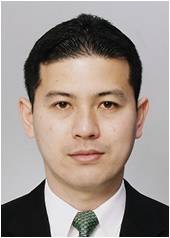Faculty
Toshiyuki Hamura
Major research fields
 Synthetic Organic Chemistry, Structural Organic Chemistry
Synthetic Organic Chemistry, Structural Organic Chemistry
The construction of highly complex molecules in a regio- and stereoselective manner is one of the most important subjects in organic synthesis. In this context, small ring compounds display unique reactivities in organic synthesis. Due to the inherent strain, these small ring molecules have attracted much attention from both theoretical and synthetic points of view. Among these molecules, cyclobutabenzene has potentially attractive chemical properties in view of its extremely high strain. Among numerous possibilities, the facile pericyclic ring opening to quinodimethane species is used for the construction of various natural/unnatural polycyclic compounds by inter- or intramolecular [4+2] cycloaddition. Several synthetic routes to these derivatives have been developed by one-bond or two-bond connection of the appropriate precursors. Most of these methods, however, have some limitations in view of the availability of the starting materials and their adaptability to functionalization. In particular, the access to oxidized derivatives is quite limited in spite of the expected greater synthetic opportunities, which hampers the progress in this area. Along these lines, our study is aimed at the development of the new synthetic route to such synthetically attractive small ring compounds and the exploit of new reactions for the construction of various natural/unnatural molecules.
Major relevant publications
- R. Akita, K. Kawanishi, T. Hamura, “Ring Selective Generation of Isobenzofuran for Divergent Access to Polycyclic Aromatic Compounds”, Org. Lett. 2015, 17, 3094–3097. (DOI: 10.1021/acs.orglett.5b01364).
- S. Eda, F. Eguchi, H. Haneda, T. Hamura, “New Synthetic Route to Substituted Tetracenes and Pentacenes via Stereoselective [4+2] Cycloadditions of 1,4-Dihydro-1,4-epoxynaphthalene and Isobenzofuran”, Chem. Commun. 2015, 51, 5963. (DOI: 10.1039/c5cc00077g).
- K. Asahina, S, Matsuoka, R. Nakayana, T. Hamura, “An efficient synthetic route to 1,3-bis(arylethynyl)isobenzofuran by using alkoxybenzocyclobutenone as a reactive platform”, Org. Biomol. Chem. 2014, 12, 9773–9776. (DOI: 10.1039/c4ob02012j).
- H. Haneda, S. Eda, M. Aratani, T. Hamura, “Dibromoisobenzofuran as a Formal Equivalent of Didehydroisobenzofuran: Reactive Platform for Expeditious Assembly of Polycycles”, Org. Lett. 2014, 16, 286–289. (DOI: 10.1021/ol4032792).
- T. Hamura, Yu Tyuda, Yuya Nakatsuji, Keisuke Suzuki, “Catalytic Generation of Arynes and Trapping by Nucleophilic Addition and Iodination”, Angew. Chem. Int. Ed. 2012, 51, 3368–3372.



